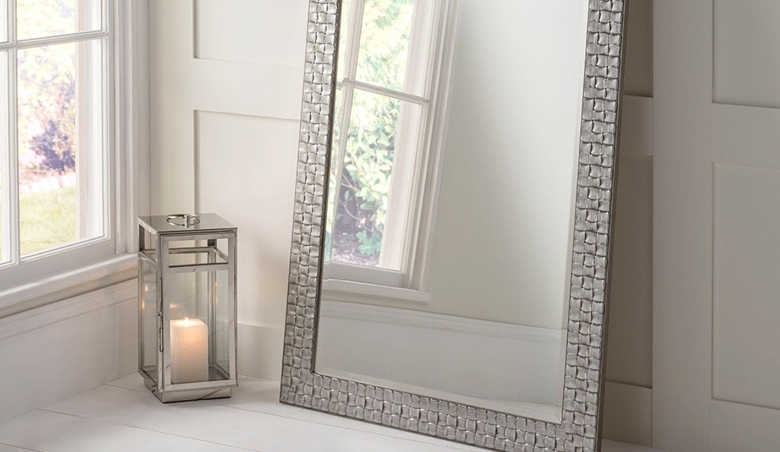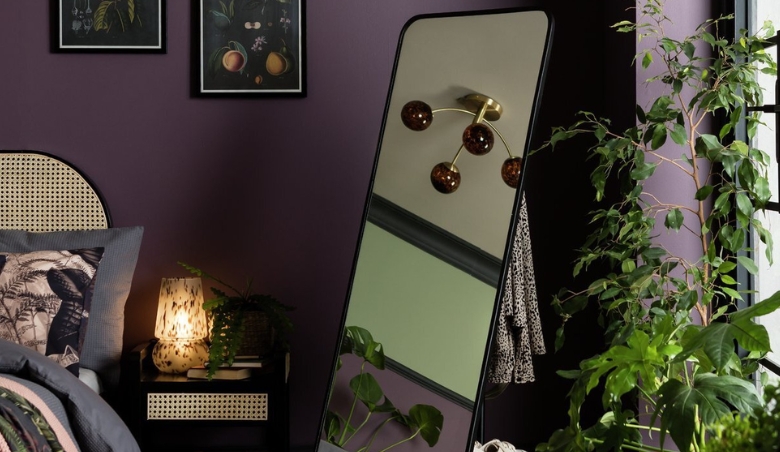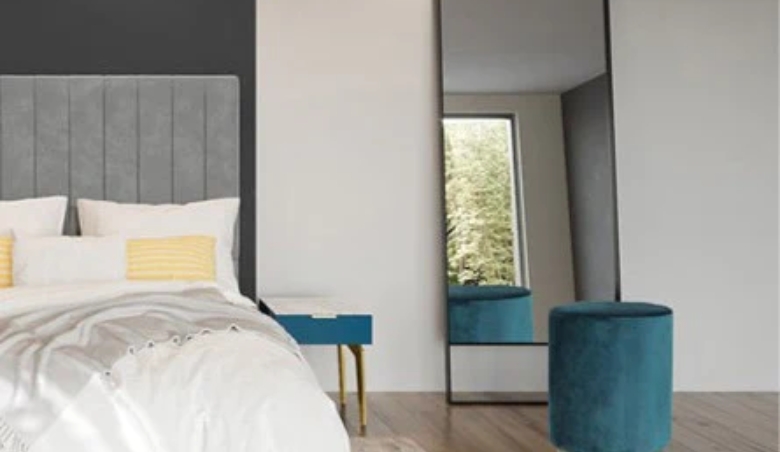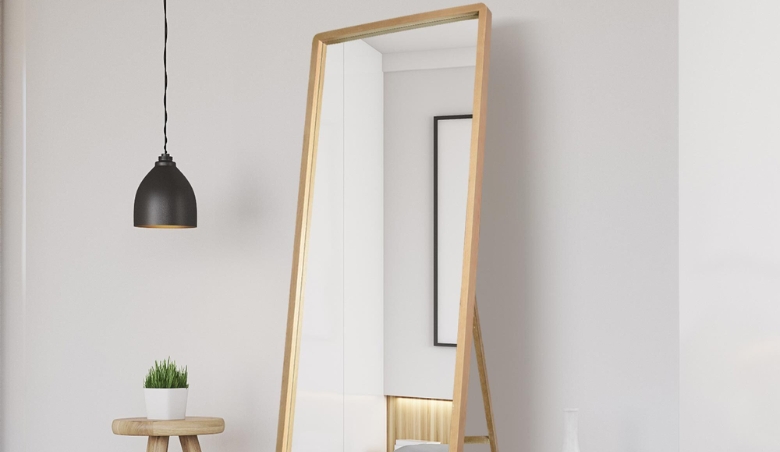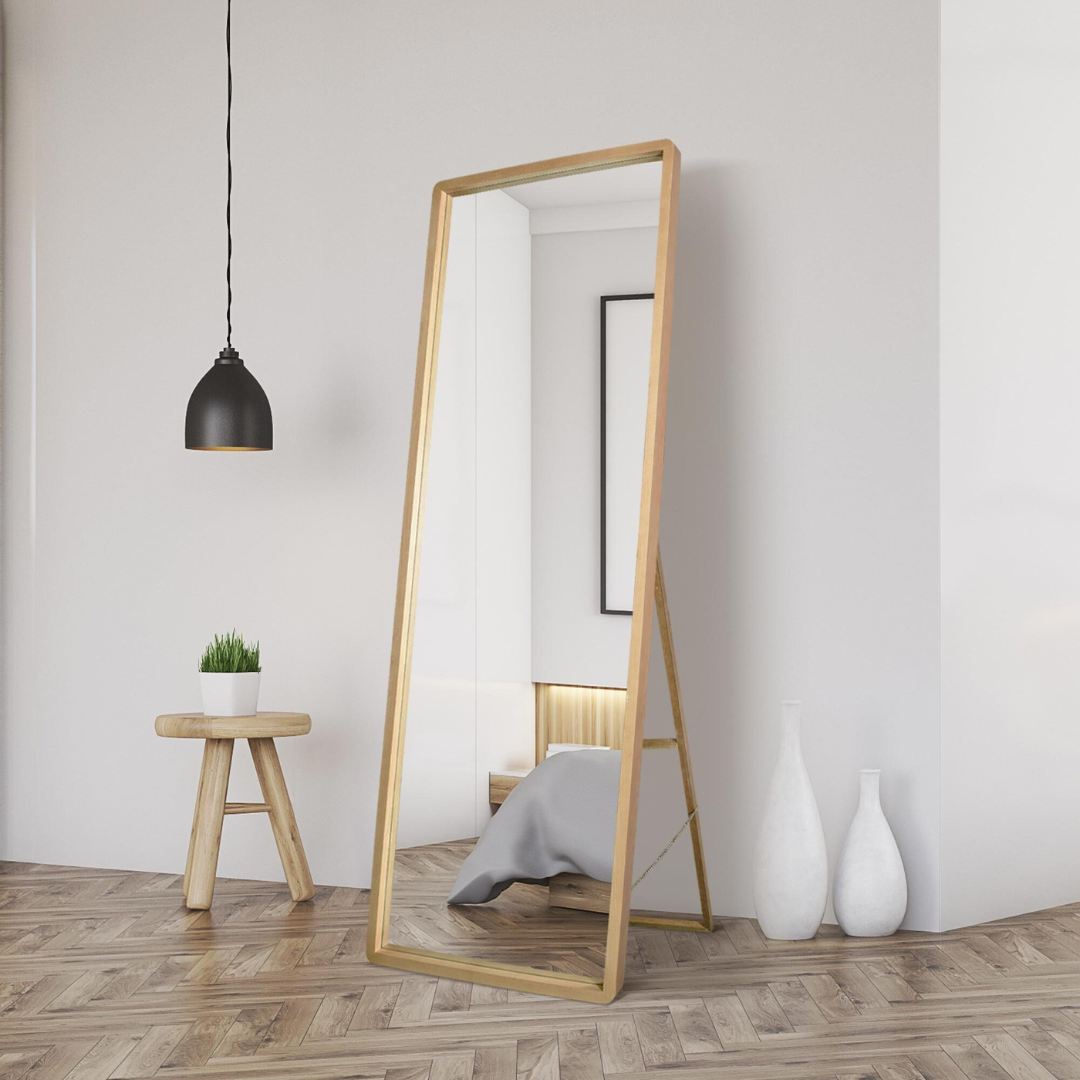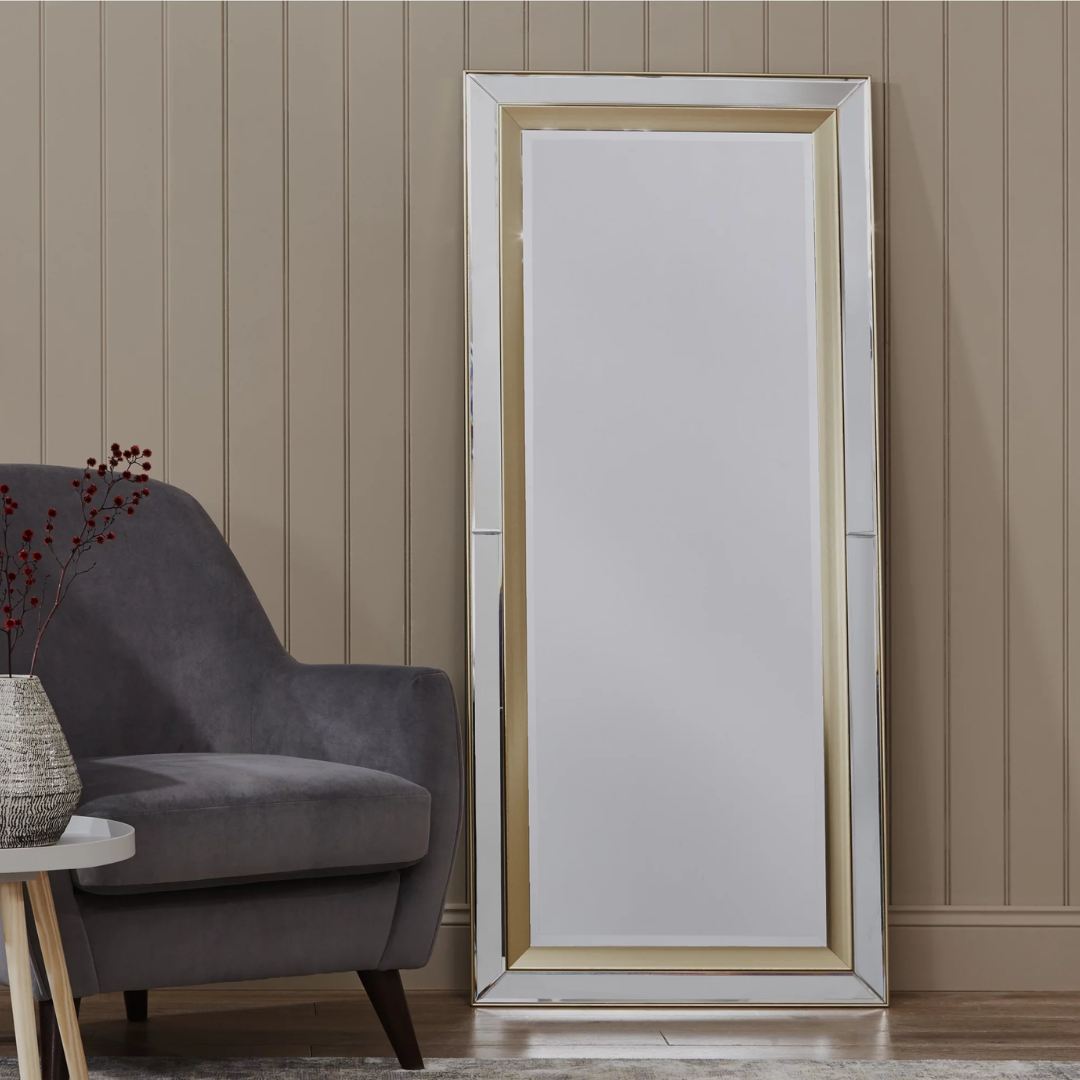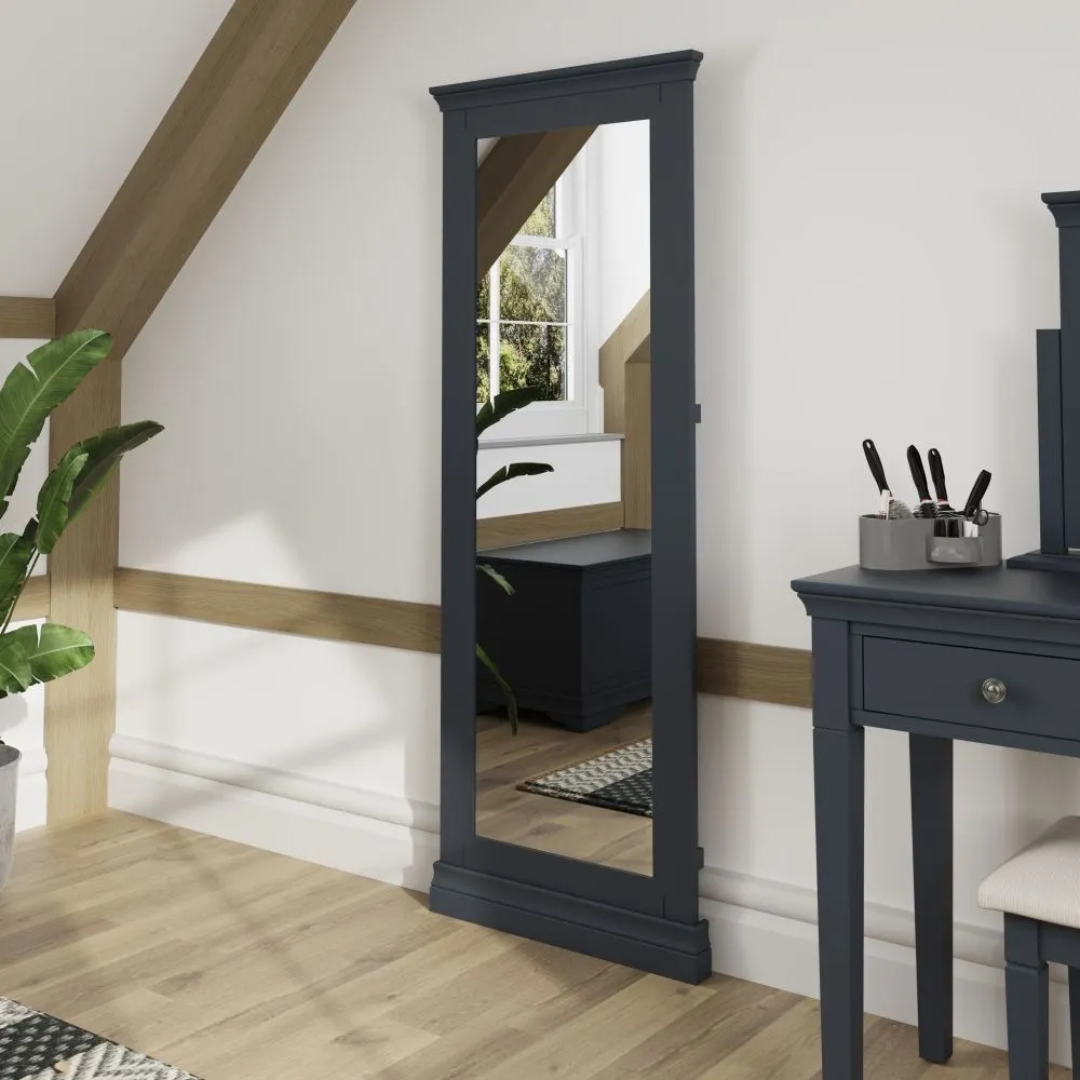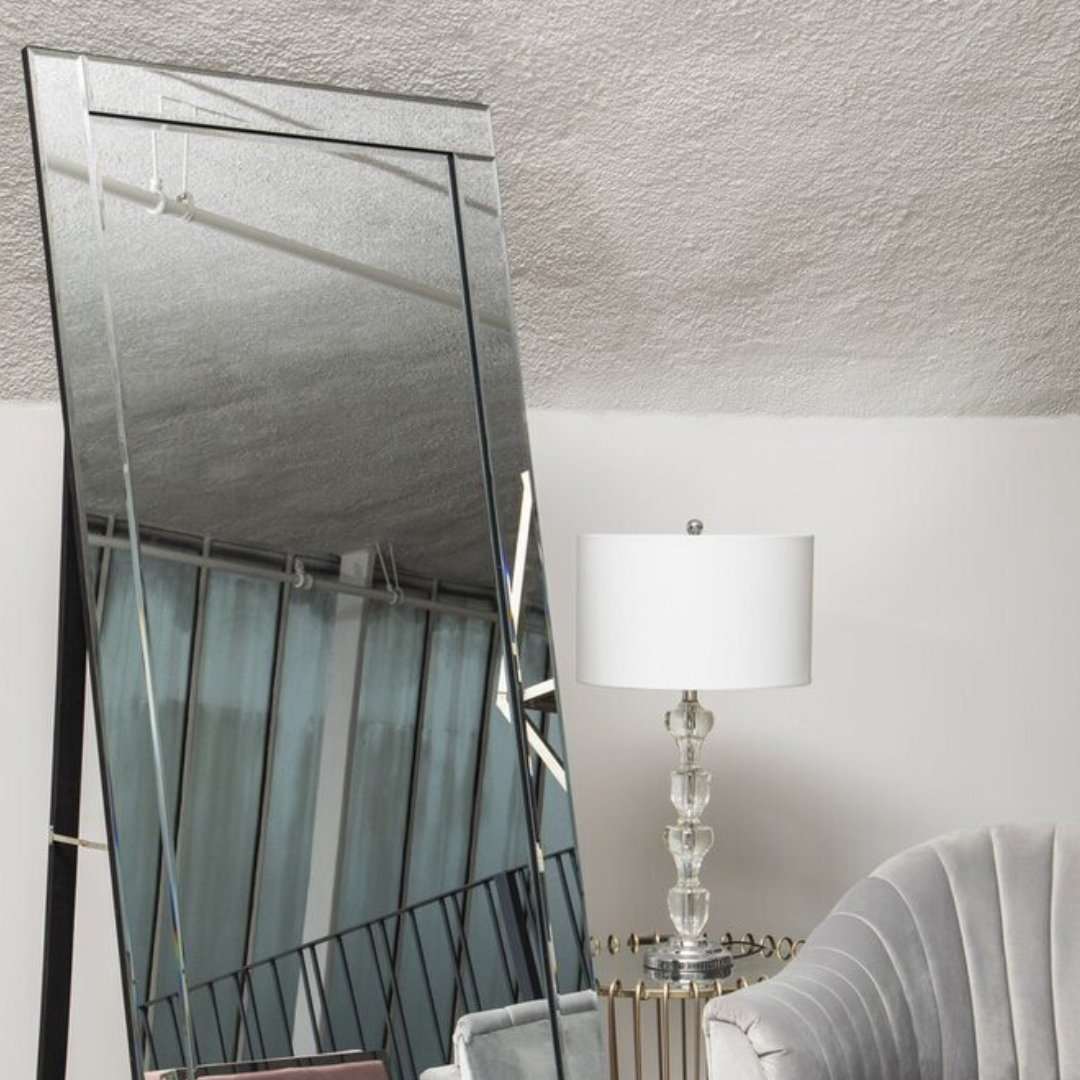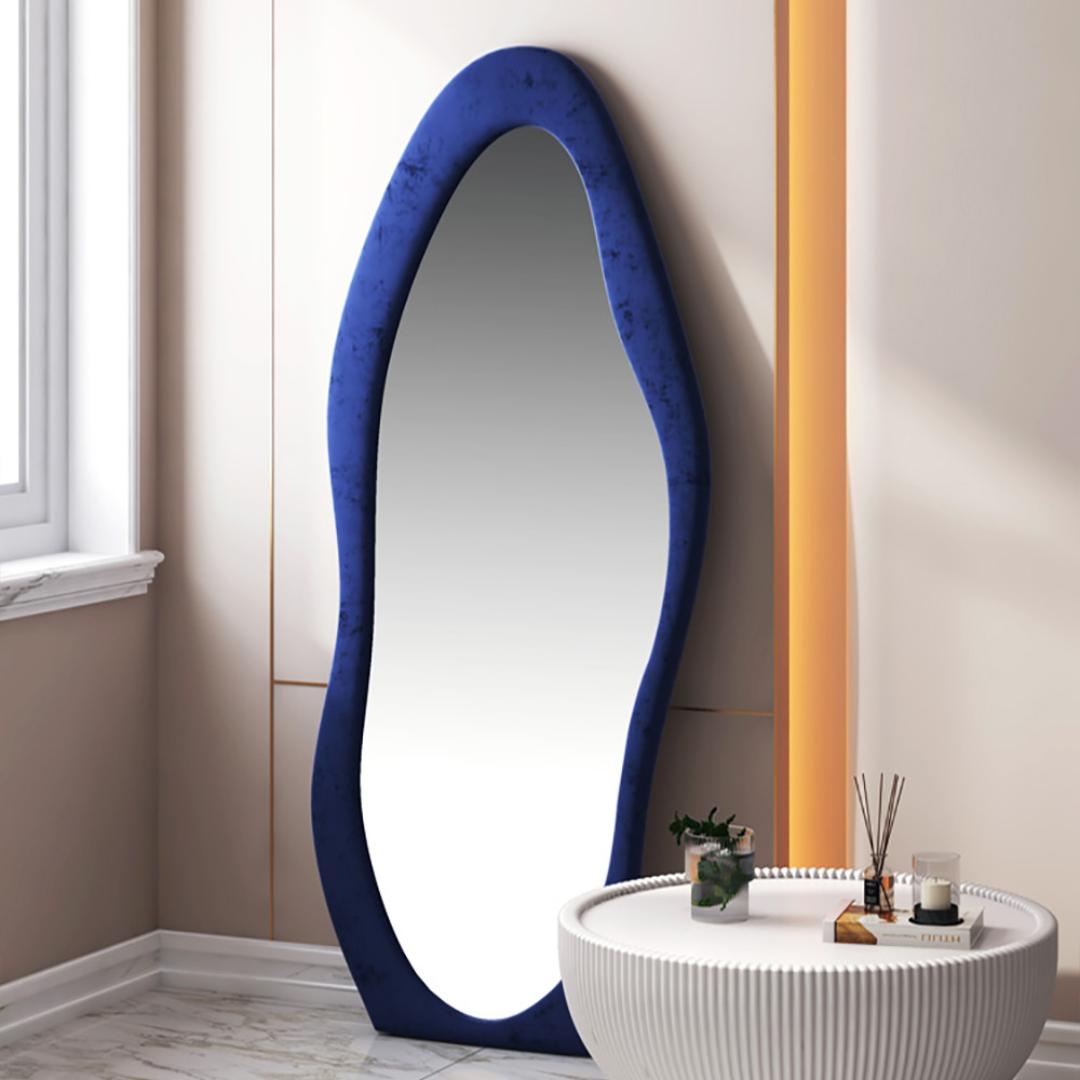Have you ever stood in front of a mirror only to find that it cut off just when you needed to see your shoes? Or maybe you've wrestled with a mirror that seemed to swallow up your entire room? Selecting the right size for a standing mirror is more than a matter of measuring walls.
In this guide, we look into the art and science of choosing the ideal standing mirror size. From space considerations to style nuances, we'll explore all the factors that ensure your mirror is not just a reflective surface, but a focal point of your home.
Understanding Space and Proportions
Assessing Your Space
Before you embark on your mirror-hunting expedition, take a moment to look at your space. How large is the room? What are the dimensions of the walls? A common mistake is choosing a mirror that overwhelms or underwhelms the room. A mirror should be in proportion to your space - large enough to be functional and aesthetic, but not so large that it dominates.
Proportion and Balance
The rule of thumb is that a mirror should be about two-thirds the size of the furniture it's near. Placing a tall mirror behind a low sofa? Make sure it's not towering over it like a skyscraper. Similarly, a narrow mirror on a large, expansive wall might look lost. Think about balance and proportion - the mirror should feel like it belongs.
Height Considerations
Ideal Height for Functionality
The primary function of a full-length mirror is to see yourself, well, fully. For most people, a mirror that stands between 150 to 170 centimetres tall will suffice. This height range caters to various heights, ensuring that both the vertically blessed and the petite can see themselves from head to toe.
Ceiling Height and Mirror Selection
Your ceiling height can be a guiding factor too. A tall mirror in a room with low ceilings can create an illusion of height, but be cautious – too tall, and it might look out of place. Conversely, in a room with high ceilings, a short mirror might look dwarfed. Consider the vertical dimensions of your space when choosing your mirror's height.
Width and Shape Dynamics
Exploring Ideal Widths
While height is crucial for a full-body reflection, width plays a significant role in functionality and aesthetics. A width of 40 to 50 centimetres is typically adequate for most needs, allowing for a comfortable view without the mirror becoming an obtrusive element. However, if your room allows, a wider mirror can add a sense of grandeur and openness.
Shape and Perceived Space
The shape of your mirror can dramatically alter the perception of your space. A wide, horizontal mirror can make a room appear broader, a perfect trick for narrower spaces. Conversely, a tall, slim mirror accentuates height, lending an air of elegance to the room. The shape you choose should complement both the size of the mirror and the characteristics of your space.
Style and Functionality
Complementing Style with Size
The style of your mirror - be it vintage, modern, ornate, or minimalistic – should harmonise with its size. A large, ornate mirror can be a statement piece, while a sleek, simple design might suit a more modest size. Remember, the frame's design and colour also contribute to the overall impact of the mirror in your space.
Functional Aspects to Consider
Apart from style, consider the functional aspects. Some mirrors come with tilting features, allowing you to adjust the angle – a handy feature for both tall and short users. Others might incorporate storage options, like shelves or drawers, which can be a boon in smaller spaces but will affect the overall size and placement of the mirror.
Light and Reflection
The Role of Size in Light Reflection
A well-placed mirror can work wonders in brightening up a room, especially when its size is optimised for maximum light reflection. A larger mirror reflects more light, making it an excellent choice for darker rooms. The key is positioning – placing your mirror opposite a window can maximise natural light and enhance the room's brightness.
Positioning for Optimal Light
The positioning of your mirror is as important as its size. For enhancing light, place your mirror where it can catch and reflect natural light without creating glare. Also, consider artificial lighting – a mirror placed near a lamp or overhead light can create a warm, inviting glow in the evenings.
Customisation and Personal Preference
Tailoring to Individual Tastes
While standard sizes are a great starting point, sometimes customisation is the answer to your perfect mirror. Tailoring the size of your mirror to your specific needs and tastes can make a world of difference. Whether it's a unique shape, size, or style, a customised mirror can be the perfect reflection of your personality.
Aesthetics Versus Utility
The balance between aesthetics and utility is a fine line. While a large, decorative mirror can be a stunning addition, it's important to consider practicality – especially in daily-use areas like bedrooms or dressing rooms. Your mirror should not only look good but also cater to your everyday needs.
Practical Tips for Buying
Key Considerations
When shopping for a standing mirror, keep these factors in mind: size, style, functionality, and light reflection. Measure your space beforehand and consider the mirror's placement – both for aesthetic balance and practical use.
Recommendations for Different Users
For fashion enthusiasts, a taller, wider mirror might be ideal, providing a complete view of outfits. Interior decorators might look for a statement piece that defines a room's character. Whatever your need, there's a mirror size that fits.
Maintenance and Longevity
Caring for Your Mirror
The size of your mirror can influence its maintenance. Larger mirrors might require more frequent cleaning due to their expansive surface area. Ensure that your mirror is easy to access for cleaning and upkeep.
Size and Ease of Relocation
Consider the ease of relocating your mirror. Larger mirrors are not only heavier but also more cumbersome to move. If you anticipate needing to move your mirror frequently, a more manageable size might be preferable.
Choosing the right size for a standing mirror is a blend of art and practicality. It's about understanding your space, your style, and your needs. Whether it's a grand, statement-making piece or a modest, functional item, the right mirror can transform your space.

